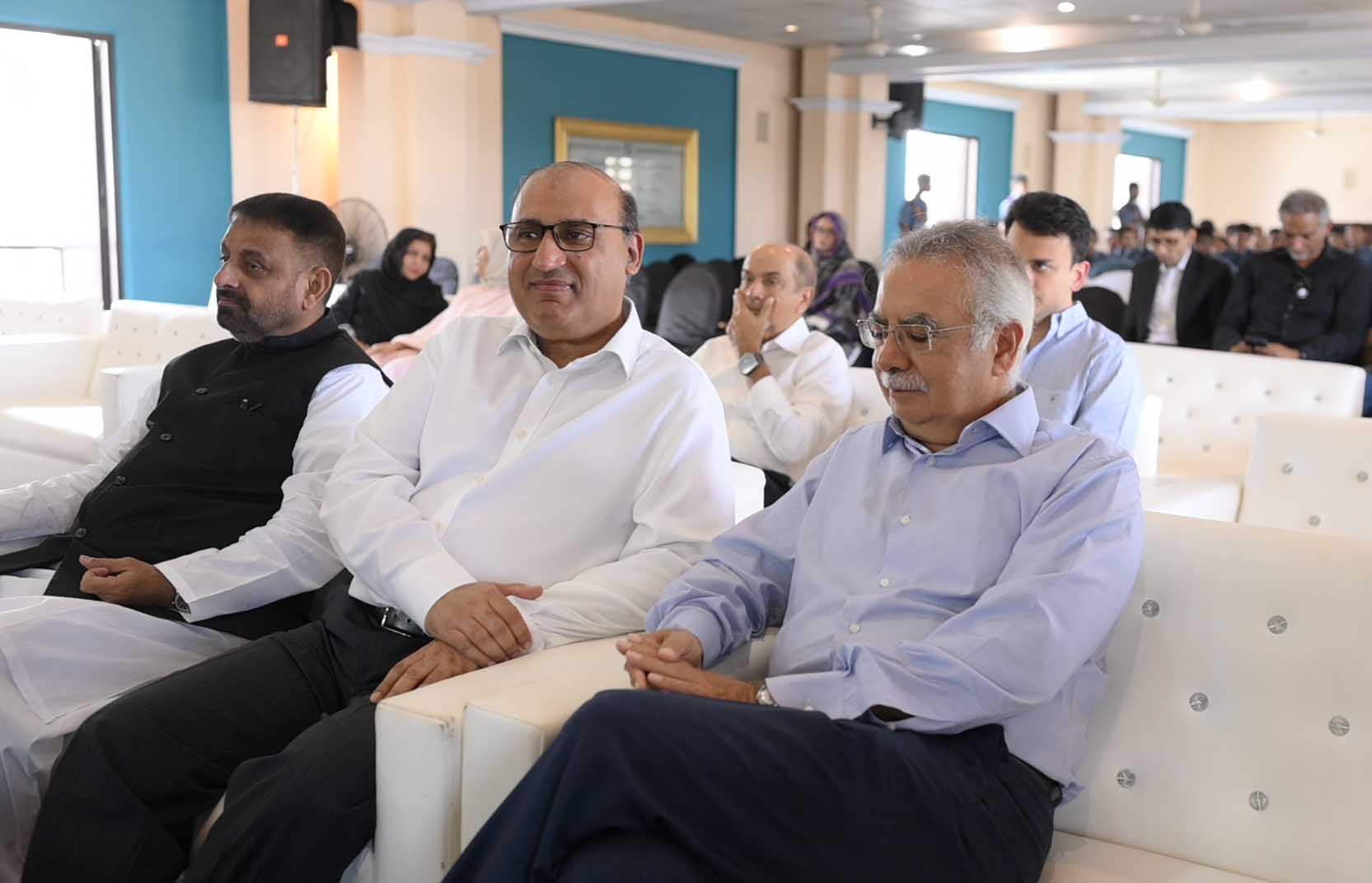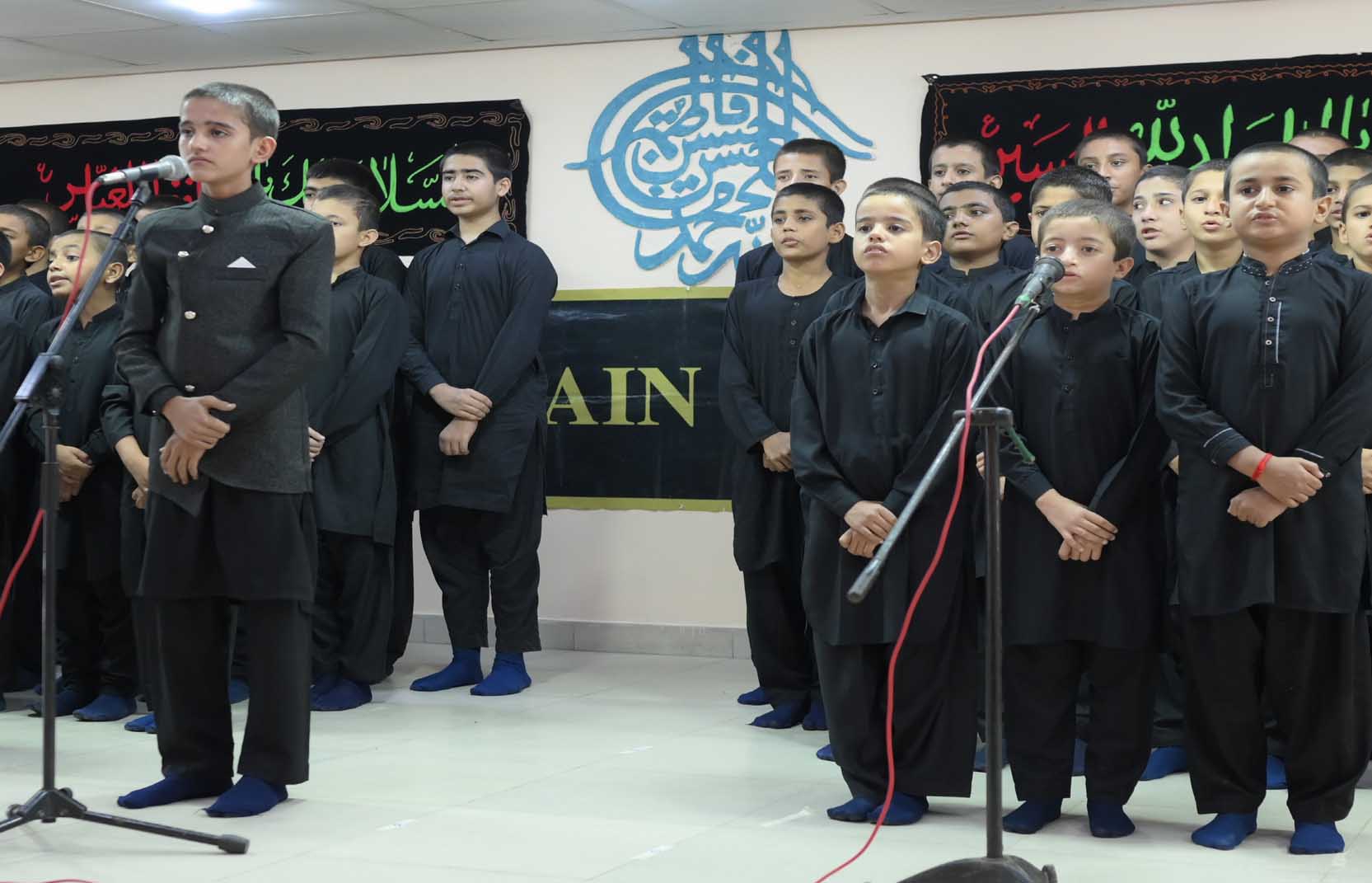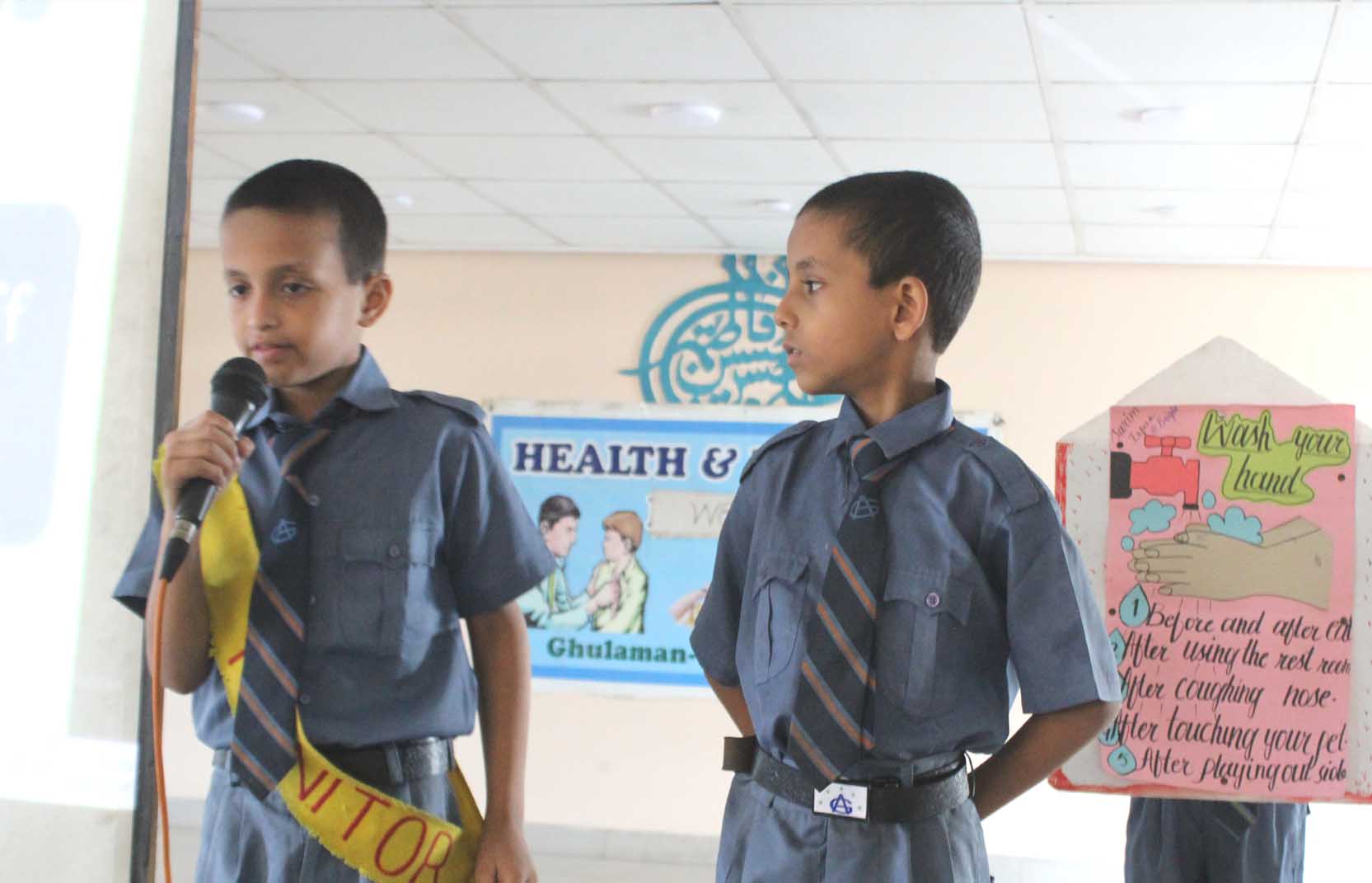ABOUT US
Ghulaman-e-Abbas School is a Trust Owned institution, serving the community since 1958.
It's a non-profit organization for boys from kindergarten to grade 10 and girls from kindergarten to grade 5.
We strongly believe that Ghulaman-e-Abbas School is the corner stone of a proudly diverse community with highly qualified and dedicated teachers and staff members. We not only support and guide grade 10 students in career selection but also develop such skills which can be helpful to them in providing immediate financial assistance to their families if required.



OUR VISION & MISSION
The vision behind our school is to provide knowledge, learning and high facilities for education to sons/wards of financially deprived families and thereby, improve the quality of life not only of the pupils but the entire families. Keeping this vision in mind, we try our best to ensure that our students not only maximize their academic potential but also become morally responsible and self-disciplined individuals equipped with skills for lifelong learning So that they become successful contributors to their families and society.
Story of Ghulaman-e-Abbas School
WHAT WE WANTED TO ACHIEVE?
Social uplifting of Khoja Community.
THE CHANGE WE BROUGHT
This was no less than a miracle. Our salutes to our leaders who brought the change.BRIEF HISTORY
1) It was officially handed over in 1958 to Ghulaman-e-Abbas Education and Medical Trust.2) The target was primarily Khoja Community.
3) The game plan was to educate the community to uplift it rather than to keep it at receiving end of monetary help for living.
WHAT WAS OUR PLAN?
The whole mission was divided into four phases:PLAN A : (From 1958 to 1970)
Aimed at mentally preparing the community to educate the children.
PLAN B : (1971 to 1980 and onwards)
Aimed at preparing the outgoing students for the practical life.
PLAN C : (1981 to till date)
Aimed at producing highly qualified professionals rather than only matriculates in the community.
PLAN D : (1990 to till date)
Aimed at preparing the well-set ex-students to share the burden of finances of the school.
PROBLEMS FACED
1) Illiteracy in the Community.2) Poverty in the masses.
3) Community members were reluctant to send their children for schooling.
1) They being illiterate were not aware of the importance and power of education.
2) They being poor were unable to pay schooling fee.
3) Their male children were part of their bread and butter earning system.
WHAT WE WANTED TO ACHIEVE?
Social uplifting of Khoja Community.THE CHANGE WE BROUGHT
1) This is a story, step by step and slide by slide, how we changed a whole community.2) This was no less than a miracle.
3) Our salutes to our leaders who brought the change.
BRIEF HISTORY
1) It was officially handed over in 1958 to Ghulaman-e-Abbas Education and Medical Trust.2) The target was primarily Khoja Community.
3) The game plan was to educate the community to uplift it rather than to keep it at receiving end of monetary help for living.
WHAT WAS OUR PLAN ?
The whole mission was divided into four phases:PLAN A : (From 1958 to 1970)
Aimed at mentally preparing the community to educate the children.
PLAN B : (1971 to 1980 and onwards)
Aimed at preparing the outgoing students for the practical life.
PLAN C : (1981 to till date)
Aimed at producing highly qualified professionals rather than only matriculates in the community.
PLAN D : (1990 to till date)
Aimed at preparing the well-set ex-students to share the burden of finances of the school.
PROBLEMS FACED
1) Illiteracy in the Community.2) Poverty in the masses.
3) Community members were reluctant to send their children for schooling.
WHY PARENTS DID NOT SEND CHILDREN TO SCHOOL?
Community members were reluctant to send their children for schooling due to three main identifiable reasons:1) They being illiterate were not aware of the importance and power of education.
2) They being poor were unable to pay schooling fee.
3) Their male children were part of their bread and butter earning system.
HOW WE OVERCAME THE PROBLEMS?
PLAN A :
1) Counseling for awareness of importance of education.2) Minimal schooling charges Free schooling when needed.
3) Monetary incentives to resistant cases.
POSITIVE ASPECTS OF THE PLAN A
1) Trustees were:a) Committed
b) Ready to spend
c) Belonging to target community.
2) The execution team was hard working.
3) The community was docile and receptive by nature.
OUTCOME OF PLAN A
The outcome was excellent and the number of registrations in the school increased.PLAN B :
Our future success depended heavily on the successful execution of Plan B. If we were able to prepare the outgoing matriculates for the practical life, the admissions rate was expected to soar. In case of failure, we would have lost the confidence of the community on our program:
1) Emphasis was given to Commerce group.
2) Special classes of accounting were introduced at matriculation level.
3) Bookkeeping was given special emphasis.
4) Every student of the school passing his matriculation was made good at typing.
5) A comprehensive technical education program has started for training of Refrigerator repair and Television and radio repair for example.
6) Job opportunities were created by institutions owned by trustees and other community well-wishers.
OUTCOME OF PLAN B
1) Plan B was a grand success.2) We were able to accommodate initial matriculates very successfully in tense job situation.
3) The result was admissions in the school in unexpected proportion.
PLAN C :
Plans A & B were a sort of fire extinguishers trying to fight the fire of illiteracy and poverty with all organized and unorganized means available at hand.Plan C was an organized, well calculated plan which had following salient targets:
1) To continue the cycle which was started about a decade ago.
2) To continuously produce jobs for those who want to support their families just after their matriculation.
3) Most importantly to target the brilliant and able students and help them in getting higher studies.
The most important and distinct feature of this phase was to target the brilliant and able students and help them in getting higher studies:
1) Career counseling and guidance was imparted to these students.
2) College fee and relevant expenditure was handled by the trust.
3) Monetary support was extended to the families where a good student would have otherwise missed the higher education due to dire need of earning bread and butter.
SUPPORTING ASPECTS OF PLAN C
1) The target students were the children of literate parents, thanks to our Phases A & B.
2) The parents were earning better than before the completion of our Phases A&B. A good number parents were in a position of paying at least part of school fee if not completely. This partially decreased the monetary burden from shoulders of the trust and paved a way for charged schooling in the future.
OUTCOME OF PLAN C
1) Outcome out proportioned even our best expectations.
2) On one side, it gave an incentive and a hope to students in the school that they have a chance to proceed for higher studies if they give good results in matriculation exams.
3) On the other hand, good students benefited a lot from the opportunity given to them by Phase C.
4) We at present have in our ex-students scores of highly educated professionals working in Pakistan or settled in different countries of the world.
PLAN D :
Plans A & B were a sort of fire extinguishers trying to fight the fire of illiteracy and poverty with all organized and unorganized means available at hand.
1) We wanted the wheel moving. We contacted the ex-students who were able to help the school financially. 2) Our old students remembered the good done to them. They are now repaying. Half of the deficit of School is being recovered by our old students. 3) A day may come when the whole burden of financing will be on the shoulders of our ex-students.